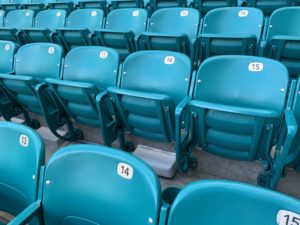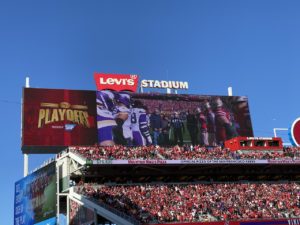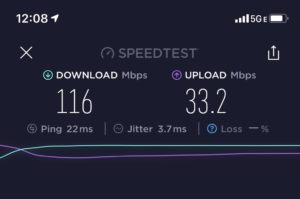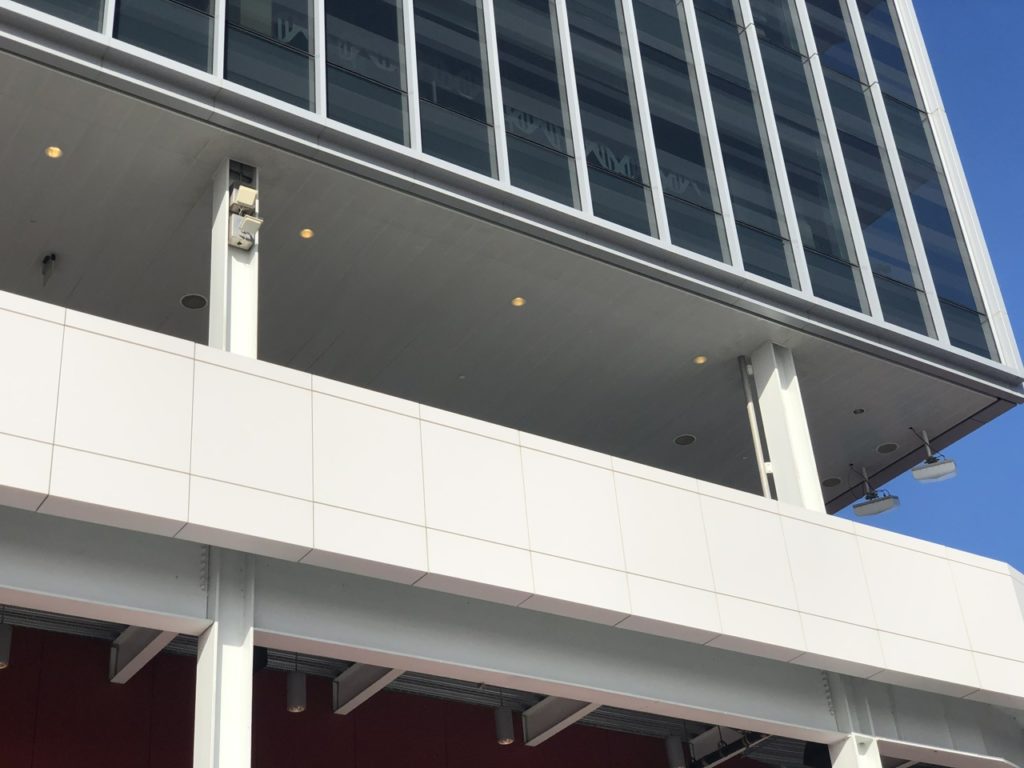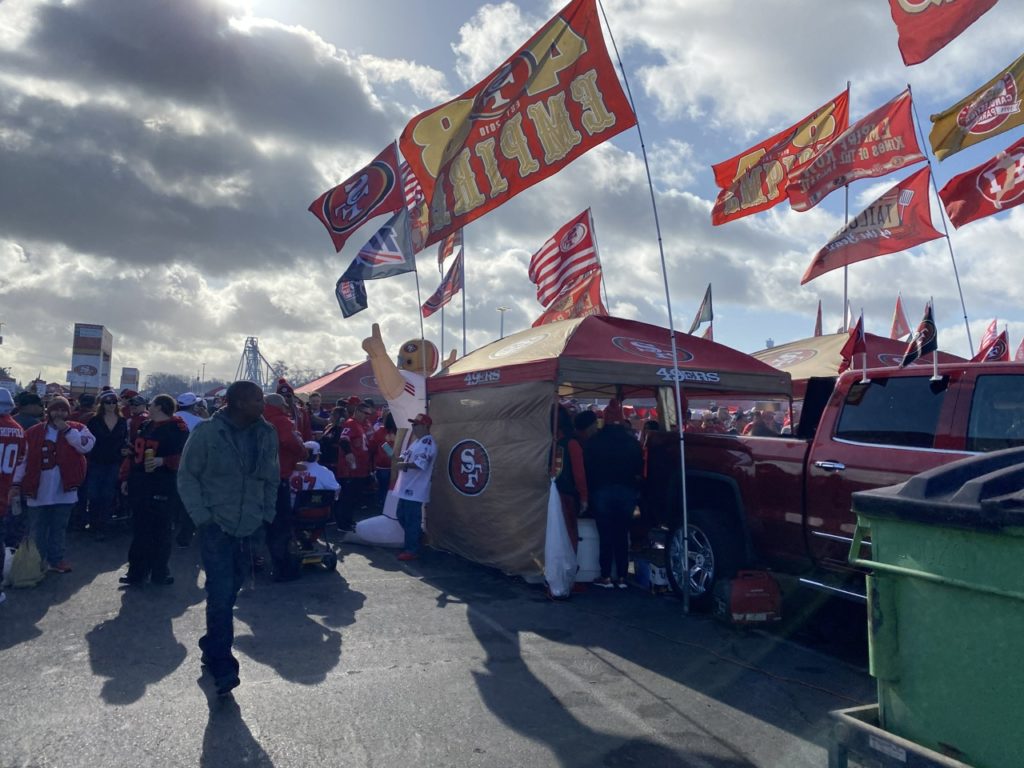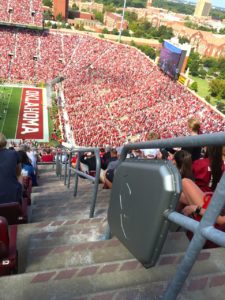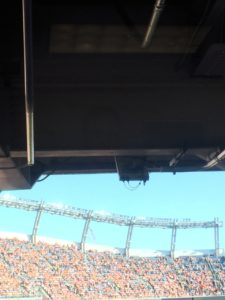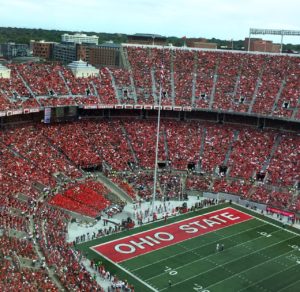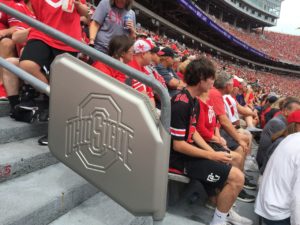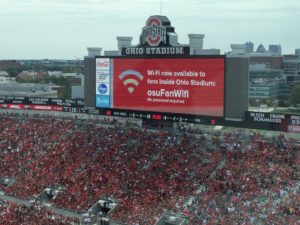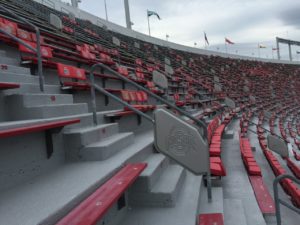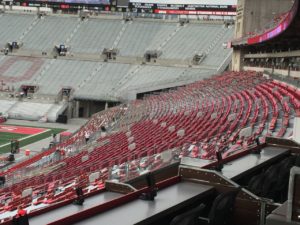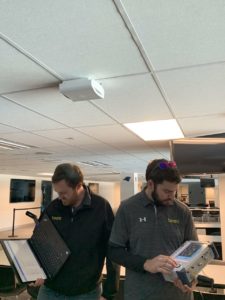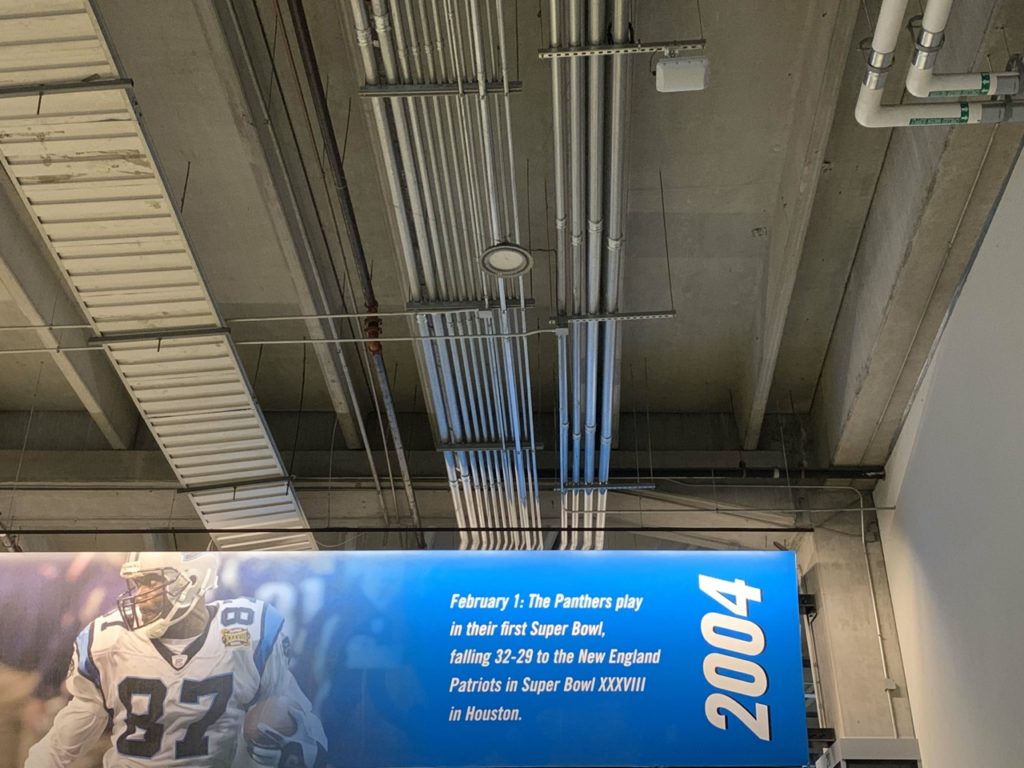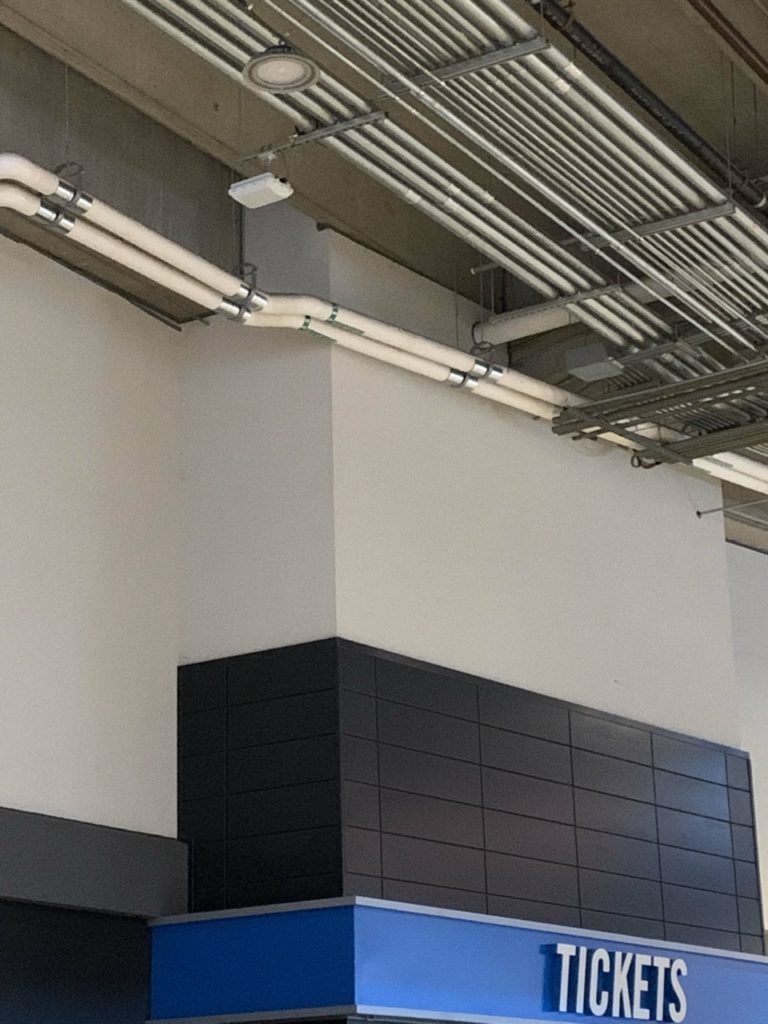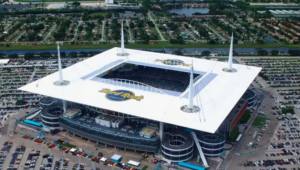
Hard Rock Stadium, home of Sunday’s Super Bowl LIV, will have 5G and CBRS networks in addition to the regular 4G LTE and Wi-Fi. Credit: Hard Rock Stadium
The mix of wireless coverage is all designed to answer the annual ever-increasing demand for bandwidth at what has historically been the sporting world’s heaviest single day for wireless traffic, a trend Verizon expects to continue once again this year. In a phone interview from Miami, Andrea Caldini, Verizon vice president of network engineering, said the company’s two-year effort to bolster wireless coverage inside and outside the Super Bowl venue was all about increasing capacity in every way possible.
“It’s exciting that this will be the first 5G millimeter-wave Super Bowl,” said Caldini, who said Verizon used the stadium’s relatively new overhang roof to mount the 5G antennas. For the 4G LTE DAS, Verizon as neutral host followed the same playbook the company has used at other recent Super Bowl venues by installing under-seat DAS enclosures in most bowl-seating areas. AT&T, T-Mobile and Sprint are all also on the DAS, according to Verizon. Out of the 1,500-plus cellular antennas in the bowl seating area, approximately 1,100 of those are in under-seat enclosures, according to Verizon.
Verizon also said that most of the bowl seating Wi-Fi coverage also comes from under seat enclosures, using gear from Extreme Networks. According to Extreme, the Wi-Fi network in Hard Rock Stadium has approximately 2,000 APs. Like in other NFL and college stadiums where it has a hand in both the cellular and Wi-Fi networks, Verizon customers at Hard Rock Stadium will have a separate Wi-Fi SSID that can autoconnect devices.But to give you some idea of the breadth of the network, Caldini did say there are 258 sectors in the stadium DAS, and another 58 sectors in the DAS covering the extensive parking lot areas surrounding the venue. Verizon also has deployed a small cell network with 4G LTE, 5G and Wi-Fi for the parking lot and tailgate areas, Caldini said. And just to make sure the field areas are covered (for postgame ceremonies and for media use), Verizon also installed two MatSing ball antennas.
CBRS gets a test deployment
While its footprint will be much smaller, Verizon did say there will be some live networks at the game using the Citizens Broadband Radio Service (CBRS) spectrum, in nine stadium suites. Just recently approved by the FCC for full commercial use, the CBRS spectrum is of great interest to carriers and to venues due to its support of the LTE standard. According to Caldini, visitors in the suites where CBRS service is available will be able to directly connect to the network if their device supports the CBRS spectrum. Apple iPhone 11 devices, along with several other Android phones, currently have radio chips that support CBRS.
Caldini is excited about the possibilities the 150 MHz of CBRS spectrum could bring to venue deployments, and said Verizon will have an expanded CBRS deployment at Super Bowl LV in Tampa in 2021.
“You’ll see CBRS being a much bigger play next year,” Caldini said.
While the new-ish overhang roof that was installed during the latest renovation of Hard Rock Stadium did give Verizon a good place for equipment mounting, Caldini said there were some other construction-type hurdles that had to be overcome during the wireless network deployments.
The lack of any handrails, she said, led to the prominence of the under-seat antenna deployments; and because the light poles at Hard Rock Stadium are designed to be lowered when extreme weather (like hurricanes) hits the area, Verizon had to mount equipment lower down on the poles.
When it comes to potential emergency situations, Caldini noted that Verizon has installed its own power system for its networks, with batteries and generators back in the head end — recalling the situation at the Mercedes-Benz Superdome in New Orleans during Super Bowl 47, when a power outage delayed the game.
“If the power goes out [in Miami], the network will stay on,” Caldini said.
And while the limited number of consumer devices supporting 5G communications will probably keep 5G usage at Super Bowl LIV somewhat low, Caldini noted that by next year’s big game, it will likely be a different story.
Recalling earlier cellular generation changes, when initial devices were usually standalone “pucks” or laptop cards, Caldini was excited to see quick support for 5G emerging.
“It’s amazing how many devices are going to support 5G,” said Caldini, who predicts there will be more than 20 5G-enabled handsets out later this year. “It’s going to be very interesting to see what we can do [with applications] next year on 5G.”
